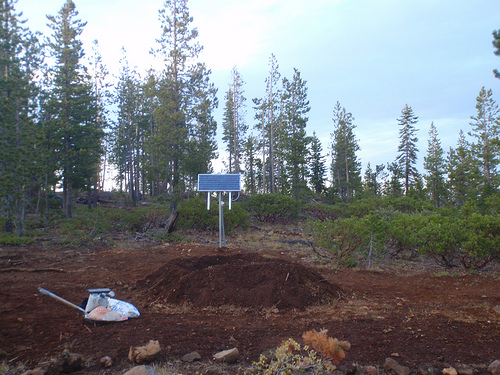J04D
Umpqua National Forest, Toketee, OR, USA
The USArray component of the NSF-funded EarthScope project ended its observational period in September 2021 and all remaining close-out tasks concluded in March 2022. Hundreds of seismic stations were transferred to other operators and continue to collect scientific observations. This USArray.org website is now in an archival state and will no longer be updated. To learn more about this project and the science it continues to enable, please view publications here: http://usarray.org/researchers/pubs and citations of the Transportable Array network DOI 10.7914/SN/TA.
To further advance geophysics support for the geophysics community, UNAVCO and IRIS are merging. The merged organization will be called EarthScope Consortium. As our science becomes more convergent, there is benefit to examining how we can support research and education as a single organization to conduct and advance cutting-edge geophysics. See our Joining Forces website for more information. The site earthscope.org will soon host the new EarthScope Consortium website.




Each USArray station includes the instrumentation necessary to continuously sense, record, and transmit ground motions from a wide range of seismic sources, including local and distant earthquakes, artificial explosions, volcanic eruptions, and other natural and human-induced activities.
Over the wide frequency range of seismic waves transmitted through the earth (hundreds of seconds to ten cycles per second), the sensors of the Reference Network and the Transportable and Flexible Arrays must be capable of resolving the smallest background motions at the quietest of sites, while remaining "on scale" for all but the largest ground motions from regional earthquakes (see sidebar). For applications in which the Flexible Array is used for observations of artificial sources (explosions or vibrators) at short ranges, the longer periods (below 1 sec) are not as important, but higher frequencies (up to 100 hz) must be recoverable for high-resolution studies.
To allow merging and direct correlation of the signals from multiple stations, the absolute timing of each recorded data sample must be known to within a few milliseconds and the location of each instrument must be known to 10 meters or better. Both precise timing and accurate locations can be obtained through the use of GPS receivers. To accurately recover the actual ground motions, the response of the full sensing and recording system must be stable and calibrated to within a few percent.
For the Transportable and Flexible Arrays, and the Reference Network, data are recorded continuously, so that post-processing can be used to extract even the smallest signals that may be hidden in background noise. Data are transmitted with minimal delay from the remote field locations to a central recording facility, greatly facilitating the process of data collection, analysis, and quality control. For some applications using the Flexible Array, where artificial explosions may be detonated at known times, segmented recording is acceptable and the instruments can be set to turn on and off at predetermined intervals.
The main system components at each USArray station include:
The primary sensors of the Reference Network and Transportable and Flexible Arrays are broadband three-component seismometers capable of sensing ground motions over the frequency band 0.01 Hz (100 sec) to 15 Hz. A subset of Reference Network sites is equipped with ultra-long-period seismometers to extend the range to 1000 seconds. The Flexible Array includes more rugged sensors that cover higher-frequency bands (0.1 Hz to 100 Hz) and are better suited for multiple deployments during active source experiments.
To provide the fidelity and dynamic range necessary to capture the full amplitude range of interest, all signals are processed with low-noise amplifiers and encoded using 24-bit, high-resolution digitizers.
To provide near-real-time data access for all interested parties, the Transportable Array and some Flexible Array stations transmit data continuously. The type of telemetry varies from site to site, depending on local conditions and communications infrastructure. In some cases, access to the Internet may be available, either directly or via a short radio link. At others sites, cellular or satellite technology may be the only, or more cost-effective, option. Whatever the mode of telemetry, a level of uniformity is provided by the use of industry standard communication protocols such as TCP/IP.
On-site disk storage is used to provide backup recorders in case of problems with the communication system, or to provide full data recovery in those cases where telemetry is not possible.
Most of the recording sites are in remote areas where access to commercial power systems may not be possible. All of the field systems are low power and capable of unattended operation from batteries and solar panels.